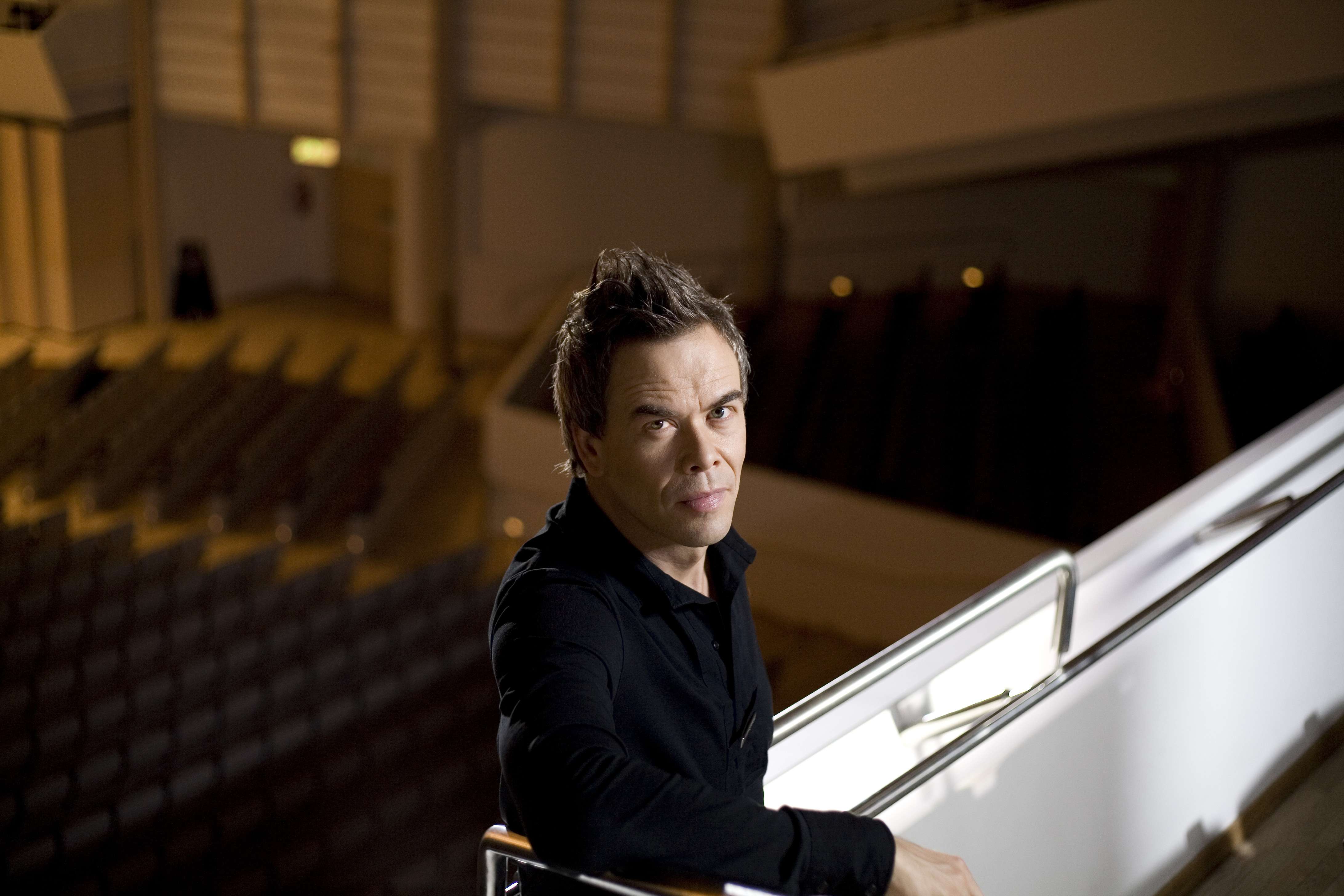|
Back
Wild sights, tame sounds Houston
Jones Hall
10/28/2010 - and Oct. 30, 31, 2010
Aulis Sallinen: Fanfare, Op. 59
Franz Liszt: Piano Concerto No. 1 in E-flat Major
Ludwig van Beethoven: Symphony No. 3 in E-flat Major, Op. 55 ("Eroica")
Markus Groh (piano)
Houston Symphony, Hannu Lintu (conductor)

H. Lintu (© Sini Pennanen)
Hannu Lintu's intriguing and, at times, maddening podium antics are wholly appropriate for Halloween weekend's concerts at Jones Hall. The Finn has returned with his tricks, and we are treated to solid performances of two warhorses preceded by a resuscitation of a past Houston Symphony commission.
Lintu's conducting is decidedly odd. His faux-hawk and height combine with unconventional gestures and are, at times, enlightening. Headbutting the strings' sforzando hemiolas in the Eroica's first movement, sculpting measures-long crescendos with a single slowly-rising gesture, incorporating legs, feet and hair to get his interpretation across, his conducting is visually fascinating. What matters most, though, is the aural result that he coaxes from the players, and in this regard the concert is a mixed bag. For all his provocative choreography, the resultant interpretations are solid, middle-of-the road and, in some cases, tame.
Aulis Sallinen's brief Fanfare was thrillingly played by the orchestra's superb brass section. The colors the composer coaxes from the brass ensemble are clever, turning what under less imaginative hands can be a monochromatic palette into a kaleidoscope. Lintu paced the piece nicely, and the only regret was its brevity. Sallinen's music is appealing, and it would be wonderful to hear the Finnish conductor bring a more substantial work from his fellow countryman to Houston.
The German pianist Markus Groh made his HSO debut with Liszt's first concerto. While Groh certainly has more than enough technique for this piece, his playing lacked potency. He was at his best in the Chopin-esque opening to the quasi adagio, producing a lovely tone and sensitively phrased melody. This quality of playing returned at the end of the section, where Groh's sustained trills were pure gossamer. In the outer sections, Lintu and Groh seemed not completely connected. At the ends of each short cadenza in the opening, the pauses for the reentry of the orchestra were excessively pregnant. The indication is a fermata over a thirty-second note, but Lintu seemed to think it necessary to give a pedantic upbeat each time, upsetting the flow and making the piece seem more episodic than it really is. This was less apparent in the "triangle" section, where the dialogue between soloist and orchestra seemed more organic. Pianist and orchestra continued to hit their stride in the finale, highlighted by powerful low brass playing.
Groh was much more convincing in his encore, Brahms' Intermezzo in E-flat, Op. 117/1. There was a wonderful sense of innigkeit to the reading. Stunningly soft, beautifully balanced playing permeated the piece, the voicing of the famous melody flawless throughout.
The Eroica symphony was marked by relatively upbeat tempos in the outer movements. The first large section of the finale, in particular, was notably brisk. Throughout the performance of this revolutionary work, the orchestra played beautifully, with especially rich, blended string sound. The Marcia funebre was interpretively the most interesting. Lintu seemed especially engaged here, steadily, almost systematically, gradating buildups and communicating to the audience a true narrative arch throughout the movement. Tellingly, the movement also contained the least unconventional podium gestures of the evening. The last two movements were solid readings. In the trio of the scherzo, the three horns galumphed joyously, the second horn's rapidly descending arpeggios wonderfully pronounced, the sudden diminished chord before the repeat of the second half excitingly accented and perfectly balanced. While this moment was finely played, the horns' culminating entrance in the finale seemed brashly loud rather than heroically full. These small details aside, the performance was levelheaded and, with eyes shut, the gestures of the conductor in one's imagination would likely be correspondingly conventional.
I must note that the Beethoven was the first piece of the season that suffered significantly from the Houston Symphony's decision to do away with risers in the winds and brass. Presumably done to "even out" balance between winds and strings, it has the opposite effect. In tutti passages, woodwind presence is almost completely lost, and all one hears is brass and string sound. Even in solo passages, flute is the only instrument that projects clearly, while the remainder of the woodwinds' solos consistently sound as if coming from afar. This was never a problem before, and this restaging decision should be reconsidered.
Marcus Karl Maroney
|